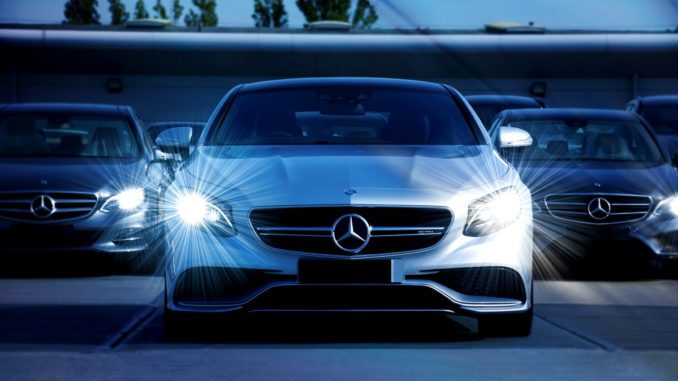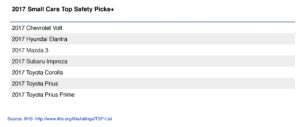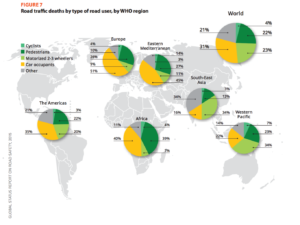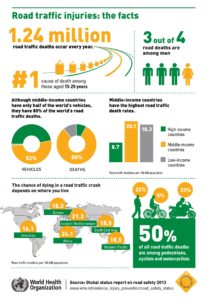
Lincoln Continental, the Mercedes-Benz E-Class, and Toyota Avalon topped the latest car crash safety test by the Insurance Institute for Highway Safety (IIHS), a US non-profit funded by auto makers.
Generally, larger and heavier vehicles offer more protection to passengers in a crash. The three cars that topped the IIHS Top Safety Pick+ for the large car category, including luxury, are all long: Toyota-195” (From $33,300), Mercedes-185 to 194” (From $52,150), and the longest is Lincoln-201” (From $44,720).
However, other even longer models failed the test: Tesla Model S-196” (From $68,000), Chevrolet Impala-201″ (From $27,500), and Ford Taurus-203″ (From $27,345) because they only earned an acceptable rating in the small overlap front test.
The small overlap test involves 25% of the vehicle’s width, or about as wide as the headlight. This replicates what happens when the front driver’s corner of the vehicle collides with another vehicle or a stationary object like a pole. Small overlap frontal crashes primarily affect a vehicle’s outer edges, which aren’t well protected by the crush-zone structures.
While the moderate overlap test involves 40% of the vehicle’s width or about half the span of the front passenger cabin starting from the driver’s side.
“Most modern cars have safety cages encapsulating the occupant compartment and built to withstand head-on collisions and moderate overlap frontal crashes with little deformation. At the same time, crush zones help manage crash energy to reduce forces on the occupant compartment. The main crush-zone structures are concentrated in the middle 50 percent of the front end. When a crash involves these structures, the occupant compartment is protected from intrusion, and front airbags and safety belts can effectively restrain and protect occupants.” (IIHS frontal crash tests)
IIHS evaluates a vehicle’s crashworthiness or how well it protects passengers in a crash. To qualify for Top Safety Pick, a car must earn:
1) good rating on five tests (small overlap front, moderate overlap front, side, roof strength, and head restraints);
2) if available, an advanced or superior rating for front crash prevention, which warns the driver or brakes automatically to avoid or mitigate a frontal collision.
To qualify for TOP SAFETY PICK+ (TSP+), the vehicle must also have an acceptable or good headlight, or one with ample illumination without excessive glare for drivers of oncoming vehicles and measures at least 5 lux. A lux is the amount of light falling on a surface, or a unit of illuminance equal to one lumen per square meter.
Considering that about half of traffic deaths occur in the dark, at dawn, or dusk, this most basic safety feature for visibility is only available in a small percentage of cars on the market with a good headlight.
Why a car’s size and weight matter in serious crashes
Vehicles are tested and awarded by size categories such as small, large, or midsize.

“Thus, a small car that’s a TOP SAFETY PICK+ or TOP SAFETY PICK doesn’t necessarily afford more protection than a bigger car that doesn’t earn the award.” (IIHS)
“All other things being equal, occupants in a bigger, heavier vehicle are better protected than those in a smaller, lighter vehicle. Both size and weight affect the forces people inside a vehicle experience during a crash. The magnitude of those forces is directly related to the risk of injury.” (IIHS)
“In the case of size, the longer distance from the front of the vehicle to the occupant compartment gives a bigger vehicle an advantage in frontal crashes, which account for half of passenger vehicle occupant deaths. The longer that distance, the bigger the crush zone, and the lower the forces on the occupants.” (IIHS)
As for weight, in physics, when two objects collide at the same speed, the one with the greater mass will have greater momentum and thus push the lighter one further in the opposite direction.
“As a result, there will be less force on the occupants of the heavier vehicle and more on the people in the lighter vehicle. Heavier vehicles also fare better in some single-vehicle crashes because they are more likely to move, bend or deform objects they hit.” (IIHS)
To see the 2017 Top Safety Picks by category, visit http://www.iihs.org/iihs/ratings/TSP-List.
UN safety regulations
The IIHS test is in compliance with the United Nation’s World Forum for Harmonisation of Vehicle Regulations that include seat belts, seat belt anchorages, front and side impact, electronic stability control, pedestrian protection, and child seats. Unfortunately, only about 47 mostly high-income countries comply with the UN regulations.

Yearly, over 1.25 million people die from a road traffic crash. About 20 to 50 million more suffer non-fatal injuries and many become disabled.
Globally, 90% of road traffic deaths occur in low and middle-income countries even though they have less than half of the world’s vehicles.
“Road traffic injuries cause considerable economic losses to individuals, their families, and to nations as a whole. These losses arise from the cost of treatment as well as lost productivity for those killed or disabled by their injuries, and for family members who need to take time off work or school to care for the injured. Road traffic crashes cost most countries 3% of their gross domestic product.” (World Health Organization or WHO Road Traffic Injuries, May 2017)
Building vehicles that are safe for passengers and pedestrians greatly reduce road crashes and injuries. Adopting the UN regulations in auto manufacture and production can save many lives. Basic standards include: front and side impact regulations, electronic stability control, airbags, and seat-belts. (WHO Road Traffic Injuries)

“The most important UN regulation for crash avoidance is electronic stability control. ESC aims to prevent skidding and loss of control in cases of oversteering or understeering, and is effective at preventing different types of crashes (single car crashes, head-on and rollover crashes, and crashes involving multiple vehicles), reducing both serious and fatal injuries. The success of ESC has led to it rapidly becoming mandatory in many high- income countries.” (Global New Car Assessment Programme or NCAP, October 15, 2015)
In case of collisions, seatbelt and car seats are critical in reducing fatalities. Only 52 countries have seatbelt features and 48 for car seats. It is important that governments step in to ensure that basic vehicle safety features are in place when a vehicle is imported into their country.
“Alternatively, automobile companies may “de-specify” life-saving technologies in newer models sold in countries where regulations are weak or non-existent. For example, a global car manufacturer required to ensure that the vehicles it sells in high-income countries all have electronic stability control (ESC) can sell the same model to markets without this life saving technology if the country does not apply the ESC regulation.” (WHO Global Status Report on Road Safety, 2015)
Very few low to middle income countries comply with UN safety features even though they are a growing market for car manufacture and purchase.
“Governments have a responsibility to take the steps needed to ensure their citizens have access to safe vehicles.” (WHO)
For their part, car consumers can demand more manufacturer compliance with safety features by buying vehicles that meet UN regulations and pass crash and safety tests.
